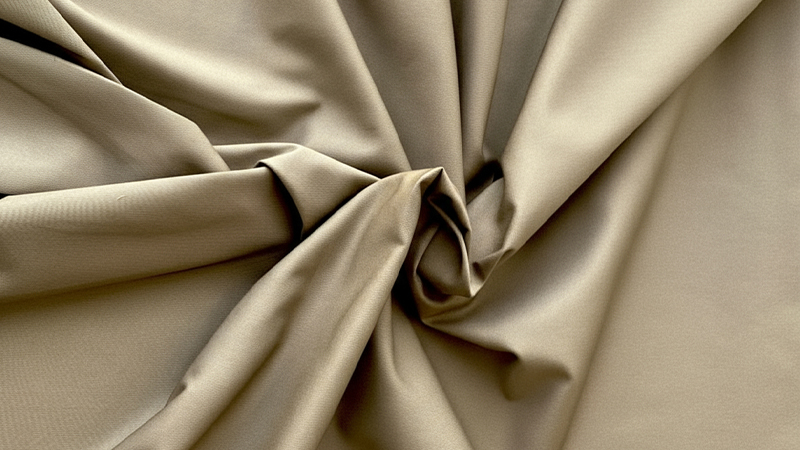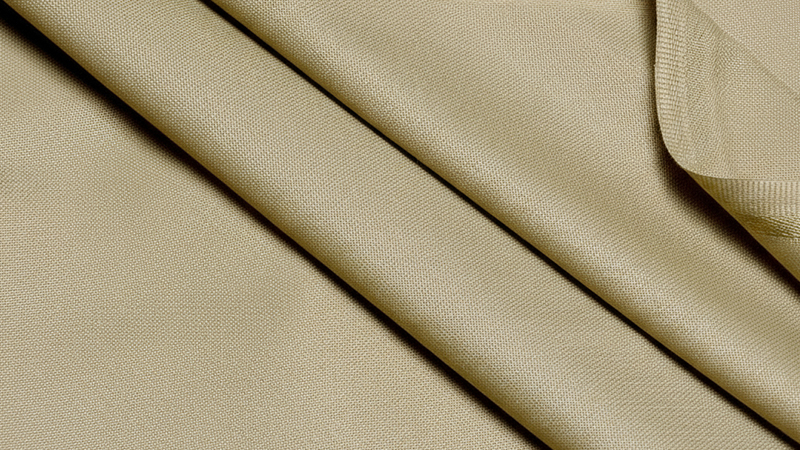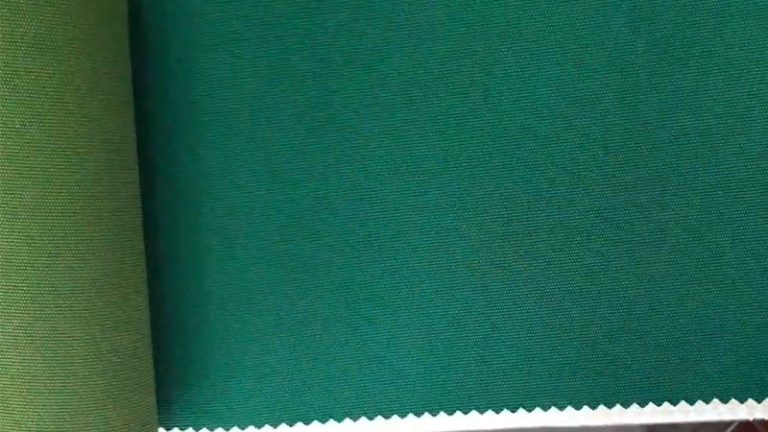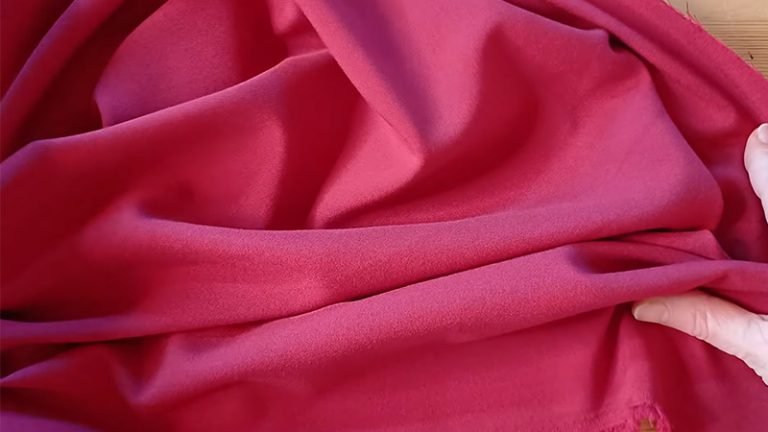
Khaki fabric is more than just a material; it is a symbol of practicality, adaptability, and enduring style. Known for its distinctive earth-toned hues, khaki fabric has journeyed from the battlefields of the 19th century to become a mainstay in modern fashion.
Its durability, comfort, and versatility make it ideal for uniforms, casual wear, and contemporary designs alike. Whether crafted from cotton, twill, or blends, khaki fabric offers a unique combination of strength and elegance.
In this comprehensive exploration, we will examine the origins, evolution, types, and modern applications of khaki fabric, illustrating why it remains a timeless textile.
The Origins of Khaki Fabric
Khaki fabric, with its characteristic earthy tone, is widely recognized today in fashion and military uniforms. But how did this fabric originate, and why did it become so popular?
Let’s explore the fascinating history of khaki:
Linguistic Roots: The Meaning Behind “Khaki”
The word “khaki” originates from the Persian word khāk, meaning soil, which evolved through Hindustani as khākī, or “soil-colored.”
The name reflects its initial purpose: creating a fabric that blended with natural surroundings, providing camouflage and practicality for military use. This earthy shade was a perfect match for dusty terrains, particularly in colonial India.
Early Use in British India
Khaki fabric first appeared in uniforms worn by the Corps of Guides in British India during the mid-19th century. Initially, soldiers wore white cotton attire, which proved impractical in rugged terrains.
By 1848, khaki cloth, typically a tightly woven linen or cotton, was introduced for summer wear. Its practicality and ability to conceal dirt made it indispensable for military campaigns, setting the stage for global adoption.
Khaki Fabric in Military History
Khaki fabric is synonymous with military uniforms and combat readiness. Its muted earthy tones and durable weave made it an essential part of military attire from the 19th century onward.
The Camouflage Revolution
Before khaki, armies wore bright, eye-catching uniforms. These were visually striking but tactically disadvantageous. Khaki fabric changed warfare uniforms by allowing soldiers to blend into sandy and earthy environments.
During the 1868 British Expedition to Abyssinia, khaki uniforms proved highly effective, marking a shift toward modern camouflage techniques.
Global Military Adoption
Khaki fabric quickly spread worldwide. The British Army expanded its use in colonial campaigns such as the Mahdist War and Second Boer War, earning soldiers the nickname “Khakis.”
Meanwhile, the U.S. Army adopted khaki during the Spanish, American War, later influencing Navy and Marine Corps field uniforms.
Over time, khaki evolved to include darker brown-green tones, like the U.S. Army’s “olive drab,” optimizing concealment for diverse terrains and seasons.
Durability and Practicality
Khaki fabric’s tightly woven cotton or cotton-blend construction made it resistant to wear, breathable, and easy to maintain,essential qualities for military operations. Its ability to hide stains and dirt reinforced its role as the material of choice for active-duty uniforms worldwide.
Characteristics of Khaki Fabric
Khaki fabric is usually made from cotton or cotton blends, providing softness, breathability, and comfort for daily wear.
Material Composition
Khaki fabric is traditionally made from cotton or cotton blends, but modern variations include polyester-cotton blends for added durability and wrinkle resistance. The fabric may be woven in twill, plain, or poplin weaves, each affecting texture, softness, and drape.
Durability and Comfort
A hallmark of khaki fabric is its balance between strength and comfort. Cotton provides breathability and softness, while twill or blended weaves enhance tensile strength, making it suitable for daily wear and outdoor use.
Color and Dye Properties
Khaki’s signature earth tone is achieved through natural or synthetic dyes. Variations include light khaki (tan), dark khaki, and khaki green (olive drab). Modern fabric production ensures consistent color retention, even after repeated washing and exposure to sunlight.
Types of Khaki Fabric

Khaki is a versatile fabric known for its durability, comfort, and neutral earthy tone. Originally used in military uniforms, khaki has become a popular choice for casual and formal wear alike. The fabric comes in different types, each suited for specific clothing styles and uses.
Here are the main types of khaki fabric:
Cotton Khaki
The most traditional form, cotton khaki, is soft, breathable, and ideal for summer wear. It is commonly used in casual trousers, shirts, and military uniforms.
Twill Khaki
Twill khaki features a diagonal weave, offering enhanced durability and resistance to wrinkles. This makes it perfect for chinos, workwear, and outdoor garments.
Polyester-Cotton Blends
Blended khaki fabrics combine cotton’s comfort with polyester’s strength, wrinkle resistance, and longevity. These are often used in uniforms, corporate wear, and garments requiring frequent laundering.
Khaki Corduroy
A niche variant, corduroy khaki combines soft ridged texture with classic khaki hues. Ideal for fall and winter clothing, corduroy adds both warmth and style.
Khaki Fabric in Civilian Fashion
Khaki fabric, originally popularized as military attire in the 19th century, has long transcended its utilitarian roots to become a staple in civilian fashion.
Its neutral tones, durability, and versatility have made it a favored choice for a wide range of garments, from casual wear to smart-casual ensembles.
Post-War Adoption
After World War II, millions of soldiers returned home wearing khaki chino trousers. These garments quickly transitioned into civilian wardrobes, creating the now-common style referred to as “khakis.” The fabric’s comfort, durability, and neutral tones made it a staple in casual and semi-formal attire.
Modern Fashion Applications
Today, khaki fabric is widely used in:
- Chinos and trousers: Smart-casual and professional wear.
- Jackets and outerwear: Blends of cotton-twill for durability.
- Shirts and blouses: Breathable cotton khaki, often paired with denim or denim alternatives.
- Accessories: Bags, hats, and even footwear incorporate khaki fabric for its versatility.
The Color Palette Advantage
Khaki’s neutral tones allow for easy pairing with various colors. It complements blues, whites, and dark hues, making it an essential piece in minimalist and capsule wardrobes.
Khaki Fabric Care and Maintenance
Khaki fabric is widely appreciated for its versatility and durability, but proper care is essential to maintain its appearance, texture, and longevity. Depending on the type of khaki, cotton, blend, twill, or linen specific care practices are recommended.
Washing and Drying
Khaki fabric generally requires gentle washing with cold water. Avoid high heat to prevent shrinking and fading, particularly for cotton-based khaki.
Ironing and Wrinkle Management
Twill and blended khaki fabrics resist wrinkles better than plain cotton. Use a medium heat iron for optimal results, and consider steam for stubborn creases.
Stain Prevention
Khaki’s earthy tones naturally mask minor stains. For deeper stains, pre-treat with mild detergents and avoid bleach, which can alter the fabric’s color.
Khaki Fabric in Global Culture

Khaki fabric, with its earthy tone and durable weave, has played a significant role not just in fashion but also in global cultural and social contexts.
From military uniforms to casual civilian wear, khaki has evolved to symbolize practicality, style, and even cultural identity.
Symbol of Practicality and Authority
From British colonial uniforms to American military attire, khaki fabric has long symbolized practicality, discipline, and authority. Its global adoption highlights its effectiveness and timeless appeal.
Fashion Industry Integration
Major fashion houses and high-street brands continue to innovate with khaki fabric. Designers experiment with cuts, textures, and blends, ensuring khaki remains contemporary while retaining its classic identity.
Sustainable and Ethical Production
Many modern manufacturers prioritize organic cotton khaki and eco-friendly dyeing processes. This aligns khaki fabric with growing consumer demands for sustainable and ethical fashion.
FAQs About Khaki Fabric
What makes khaki fabric durable?
Its tightly woven cotton or cotton-blend structure provides tensile strength, resistance to wear, and the ability to conceal stains. Twill weaves and polyester blends enhance durability further.
Is khaki fabric only used for pants?
No. While chinos are the most common use, khaki fabric is also used in jackets, shirts, skirts, accessories, and uniforms across industries.
Can khaki fabric be dyed different colors?
Yes. While traditionally soil-toned, modern khaki fabrics can be dyed in lighter or darker shades, including olive, tan, and even muted pastels, for fashion purposes.
Why is khaki fabric still popular today?
Its blend of durability, versatility, comfort, and neutral tones ensures relevance in both fashion and utility applications, from casual wear to professional uniforms.
Conclusion
Khaki fabric stands as a timeless textile, bridging history, functionality, and fashion. From its origins as a practical military material to its integration into contemporary clothing, khaki fabric demonstrates adaptability, comfort, and enduring style.
Its diverse applications, from sturdy workwear to elegant casual trousers, underscore its universal appeal. As both a historical symbol and a modern wardrobe essential, khaki fabric continues to thrive, proving that a material rooted in practicality can evolve into an icon of sophistication and versatility.






